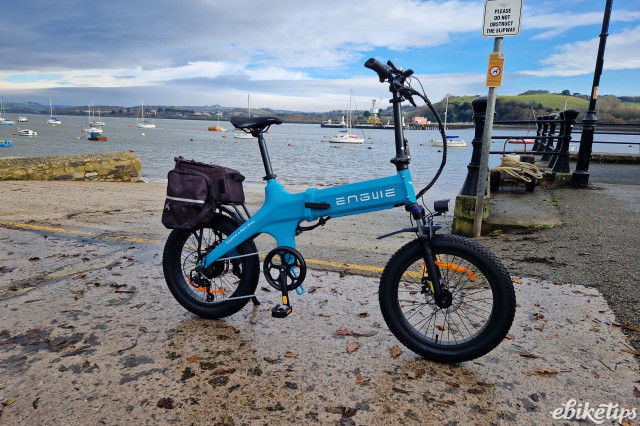Licences to ride e-bikes on public highways could be heading California's way after Assembly member Tasha Boerner drafted Assembly Bill 530 to require a licence for e-bike riders without an active driver’s licence. The proposed law follows a number of recent fatalities on e-bikes that achieved a high profile in the US media.
The main elements of the law as outlined in a statement by Boerner are:
- E-bike riders without a valid driver’s licence would need to take an online written test and have state-issued photo identification
- Under 12s would be prohibited from riding e-bikes (for context, it's illegal in the UK to ride e-bikes under the age of 14)
- Creation of a stakeholders working group that includes the DMV (the Californian Department of Motor Vehicles), California Highway Patrol, the Transportation Agency, bike groups, and more to establish an e-bike training program and licence, including more specifics on the classes and types of e-bikes.
If passed, violation of the new law would be a criminal offence in the state of California.
In the UK the subject of licensing bikes (not specifically e-bikes) occasionally surfaces but only really as an abstract discussion topic.
City planner and urban mobility expert Brent Toderian told our sister site, road.cc that even when it's raised in the US, the topic tends to fizzle out quite quickly, "as those who are actually informed on the issue point out all the reasons why it's far too expensive, won't work, and would be detrimental to actual stated public goals."
There do though appear to be a few US areas where bike registration is mandated, though this appears very different to the e-bike licensing aimed at younger riders we are talking about here.
Fatal accident background and other local moves to regulate e-bikes
The proposed law hasn't come out of the blue and Boerner's statement itself references 'a recent string of tragedies' where young people have died - and it's clear younger riders are at the forefront of her thoughts.
"As a mother and a legislator, I believe that we must act to prevent our youth from injuries and educate parents on the promise and responsibility of e-bikes, and AB 530 is another step to increase their safety while sharing the road," she said.
The most recent incident involved the death of 15 year old Brodee Champlain-Kingman on June 22 this year after the e-bike he was riding crashed into a van in the beach city of Encinitas in southern California.
Indeed, the Californian cities of Carlsbad and Encinitas have alrady declared 'states of emergency' after a number of e-bike fatalities. As this InsideEVs article points out, in the case of Carlsbad at least, the ensuing safety program is not just targeting e-bikers, recognising of course that it's not always the e-biker's fault they are in an accident:
"...in Carlsbad, California, the City Council recently approved the implementation of several traffic safety efforts directed specifically towards making the city’s roads safer for cyclists, both electric and otherwise. A budget of $2 million was set in place, with the breakdown including deploying additional police officers, holding training programs for law enforcement, deploying speed limit signs and electronic messaging boards, and bolstering the city’s safe driving education program."
US law and e-bikes
US e-bike laws are rather different to the stricter EU/UK model that we are used to describing here on ebiketips. There is greater scope for throttle-only e-bikes and 'class 3' 28mph machines "exempt from the motor vehicle financial responsibility, driver's license, and license plate requirements". In most UK and EU countries these they would be considered fully-fledged motor vehicles and regulated accordingly.
In the US e-bikes are regulated on a state by state basis, though a similar standard 'three class' model is often followed. Californian law is pretty typical and mandates the following three classes:
- Class 1... provides assistance only when the rider is pedalling and ceases to provide assistance when a speed of 20mph is reached. Currently no age limit.
- Class 2... a throttle-assisted e-bike with electric assist up to 20mph. Currently no age limit.
- Class 3... provide assistance only when the rider is pedaling up to a maximum speed of 28mph. Class 3 riders must be 16 years old or older, wear a helmet, cannot transport passengers and can only ride in a bicycle lane if authorised by a local authority or ordinance.
Stats unclear
Whilst youth e-bike riding in parts of California is clearly on a scale we aren't familiar with in the UK, and the concern for safer riding is laudable, the actual nature of any safety problem has been little explored in terms of hard numbers.
Between 2017 and 2021 the US's National Transportation Safety Board (NTSB) counted 119 fatalities from e-bike and other 'e-micromobility' accidents and decried the, “lack of complete, consistent and reliable data”. However, a couple of other stats give a bit of perspective to the story. Firstly it seems there is likely to be an awful lot of e-bike riding going on across the US as 2022 saw annual e-bikes sales top 1 million for the first time. Secondly the number of deaths on US roads annually - involving all road users - is currently running at well over 40,000.






